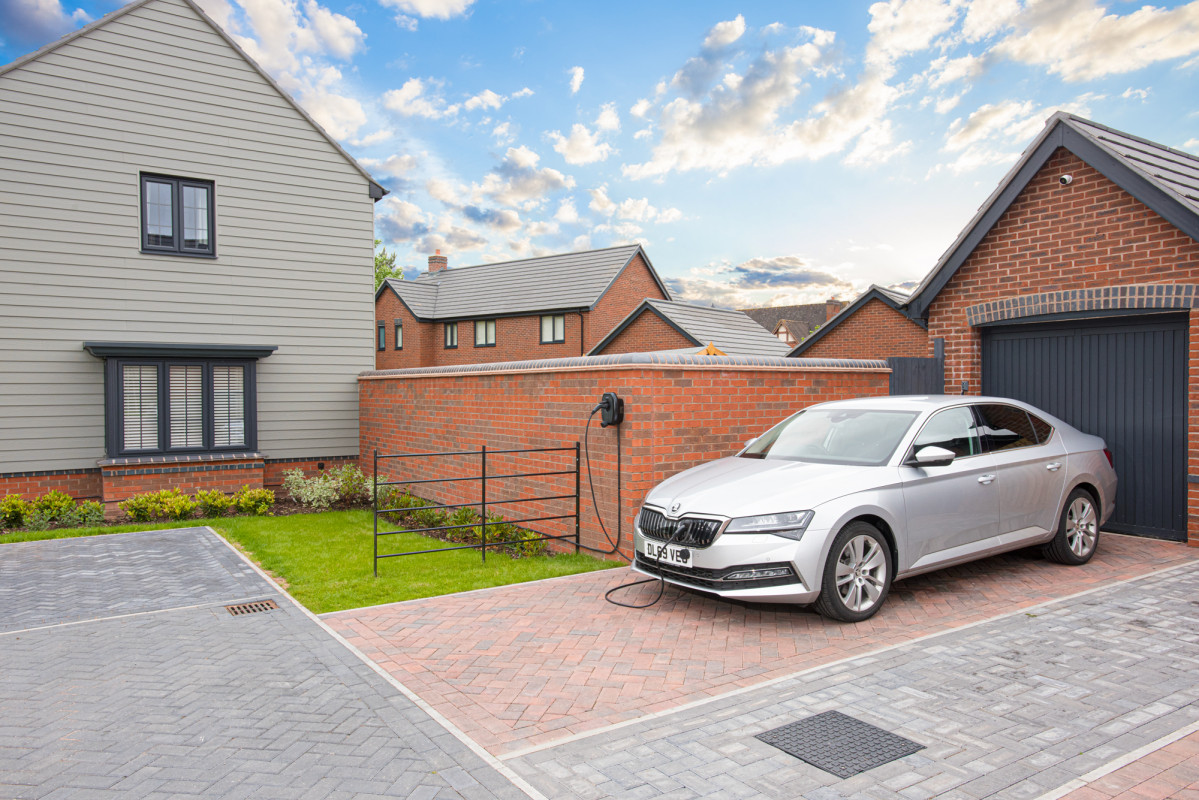Part S Building Regulations - Infrastructure for the charging of electric vehicles

Following a consultation in July 2019 the Government has introduced legislation mandating the installation of electric vehicle charge-points aiming to futureproof homes and buildings.
The new measures, introduced in June 2022, form Part S Building Regulations and now require:
- Every new home, including those created from a change of use, with associated parking within the site boundary to have an electric vehicle charge-point
- Residential buildings undergoing major renovation, which will have more than 10 parking spaces within the site boundary after the renovation is complete, to have at least one electric vehicle charge point for each dwelling with associated parking within the site boundary and cable routes in all spaces without charge points
- All new non-residential buildings, with more than 10 parking spaces within the site boundary of the building, to have a minimum of one charge point and in addition to this, cable routes for one in five of the total number of spaces
- All non-residential buildings, undergoing a major renovation, which will have more than 10 parking spaces within the site boundary after the renovation is complete, to have a minimum of one charge point and in addition to this, cable routes for one in five spaces
Why was Part S introduced?
The publication of Part S followed other Building Regulations changes announced in late 2021, which aim to increase energy efficiency of buildings across England.
A major contributing factor is climate change. With Governments and manufacturers moving away from Internal Combustion Engine (ICE) vehicles, the UK is set to ban the sale of all new cars using ICE in 2030, with almost all major manufacturers committed to either stopping producing ICE cars altogether, or to offering pure-electric alternatives in the near future.
This means that electric cars have never been more widely available, and there has never been a more relevant time to consider the alternatives to ICE vehicles.
The purpose then of these regulations is to ensure infrastructure matches ambition when it comes to investment in EV technology. Consumers will have greater confidence that EVs will meet their day-to-day needs, and manufacturers will in turn have confidence that there is a market for EVs.
Who does this affect?
From initial design right through to being tenanted, the new regulations will affect virtually anyone involved in the process of building a new property, or making major renovation to existing property, including:
- Architects
- Developers
- Property Managers
- Contractors
- Self-builders
- Conversions undergoing change of use (barn conversions, for example)
- Major renovations (such as large home conversion to flats where there will be more than 10 associated parking spaces)
However, Part S will not apply to an individual renovator or someone extending their home.
Is Part S the same as the new charging-points Law?
No. Part S guidelines ensure that all new build properties have provision for an EV charge-point.
The Electric Vehicle Smart Charging-points law (which came in to force in on 30 June 2022) relates to the chargers themselves, meaning that all EV charge-points must be pre-configured with Smart technology allowing all chargers to be online and accessible by the local network operators.
Do EV charge-points need to meet a certain specification/requirement?
Yes, Part S stipulates that charge-points must meet all the following technical requirements:
- Be designed and installed as described in BS EN 61851 (the British Standard for Electric Vehicle conductive charging system general requirements)
- Have a minimum nominal rated output of 7kW
- Be fitted with a universal socket (also known as an untethered electric vehicle charge point). Alternatively, in exceptional circumstances, such as for a self-build property, if the vehicle requirements are already known, a tethered electric vehicle charge point may be acceptable
- Be fitted with an indicator to show the equipment’s charging status that uses lights, or a visual display.
- Be a minimum of a Mode 3 specialised system for electric vehicle charging running from a dedicated circuit, or equivalent, as defined in BS EN IEC 61851-1
- The requirements of BS 7671 (The British Standard Requirements for Electrical Installations, IET Wiring Regulations)
- The requirements in the IET’s Code of Practice: Electric Vehicle Charging Equipment Installation.
BG SyncEV chargers have been approved by the UK Government Office for Zero Emission Vehicles (OZEV).
Click here to view our chargers on the residential charge-point approval list (Search Luceco PLC).
What is the Minimum Power Requirement?
All new EV charge points being installed will need to provide a minimum power supply of 7kW, or have the cable routes ready for this supply.
BG SyncEV chargers feature dynamic charging to 7.4kW.
When Does Part S Come into Effect?
Part S came into effect on 15 June 2022, with a grace period taking effect until 2023 for buildings that are currently still in the build process.
If you applied for a building notice or initial notice before 15 June 2022, your project will still be considered under the previous Building Regulations, provided building work begins before 15 June 2023.
But, if you obtained Building Regulations approval under the old regulations, you must begin work by 15 June 2023 or the new regulations will apply.
The outcome of the Scottish Government’s consultation on changes to Building Regulations has yet to be announced, but expected by the end of 2022.
